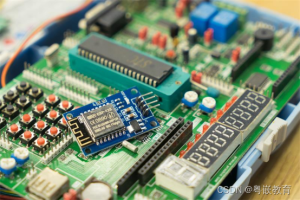There’s nothing worse for developers than trying to maintain and update code that’s so poorly quality. For many development teams, software code quality is not required. To improve code quality, here are a few tips that embedded developers can follow and integrate into their own processes that will help improve the quality of their code. hmi panel display
Tip 1 – Follow coding standards
Developers interested in improving code quality should start by checking industry standards. Developers can take advantage of a number of industry standards to improve the way they write code, including:
l MISRA-C
l Cert-C
l IEC 12207
l IEC 62304
These standards establish a framework for developing high-quality software. Anyone who wants to improve the quality of their software should review what has been done and start implementing industry recommendations.
Tip 2 – Analyze and maintain software complexity
It has been proven many times that minimizing software complexity also minimizes error rates. The more complex the software, the greater the variation, not only will there be software bugs, but also maintenance of the system will also increase bugs. Developers should monitor their function complexity by using circle complexity.
Tip 3 – Conduct regular code reviews
Code reviews have proven to be the most effective way to reduce software errors. Integrating peer review into the development cycle is critical to ensuring that software quality remains at a high level. In order to have an effective code review process, embedded developers should follow several key factors:
Limit code reviews to 60
Do not exceed 400 LOCs per review
Schedule code reviews at least once a week (more if you generate more than 400 LOKs per week)
Tip 4 – Requirements must be traceable
If a requirement cannot be tested and validated in some way, preferably automated, then it is not a real requirement. Even before development begins, requirements should be broken down into traceable test cases that can be used later to verify that all requirements have been met. Of course, requirements will change and different design approaches will be used, but there needs to be a way to trace software features and functionality, trace them back to the requirements that generated them, and prove that they work as intended.

Tip 5 – Compile without errors and warnings
Many teams and developers who ignore compiler warnings sometimes only have one or two warnings that require developers to dig deeper, or are trivial, so they are ignored and just hang there. If the compiler does not trust the code and gives a warning, then the developer should treat it as a compiler error and resolve the warning. A warning is a way for the compiler to indicate that it doesn’t like something. Honestly, the C compiler loves anything, so if it has problems with something, then we should do the same as embedded developers. Code quality means no errors and warnings.
Tip 6 – Static Analysis
A static code analyzer is one of the fastest ways to discover potential problems with embedded software. Static code analyzers can find syntax issues, potential glitches, and identify non-portable structures in your code, static analyzers can even check that coding standards are being followed, and integrating static analyzers into a continuous build process is a great way to improve code quality and minimize software errors.
Tip 7 – All code must be thoroughly tested
Many small and medium-sized businesses release products without fully testing the software. These companies tend to perform high-level spot checks to see if the system is working the way they expect it to, and then send them into the wild. Most readers may not be surprised when they learn that the products of these companies are having problems in this area. As embedded developers, we can’t assume that our code is working just because we haven’t seen the system behave inappropriately. Our code needs to be thoroughly tested! Thorough testing means:
High-level test cases have been validated
The unit test has been executed
Implementation of integration tests
The code coverage test has been completed to verify that each line of code is executed during testing
System tracking analysis to verify that time, performance, and system behavior are correct, not just correct for the user.
If a line of code is not executed during testing, there is no way to know whether the line of code contains an error that will one day occur when a user uses the system.
conclusion
Improving code quality doesn’t have to be a major, expensive task. These recommendations are easy to implement and can even be done in weeks or months. The end result will be higher quality software that provides a better user experience while reducing embedded development costs.
